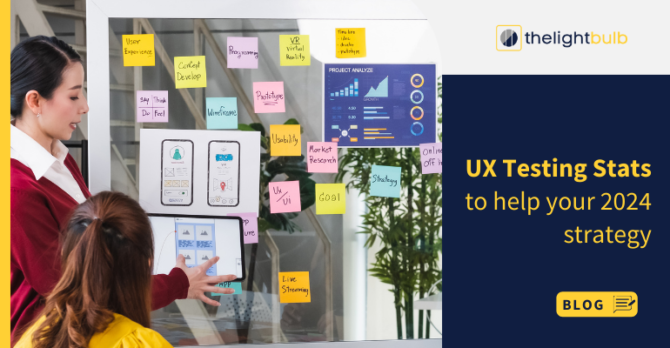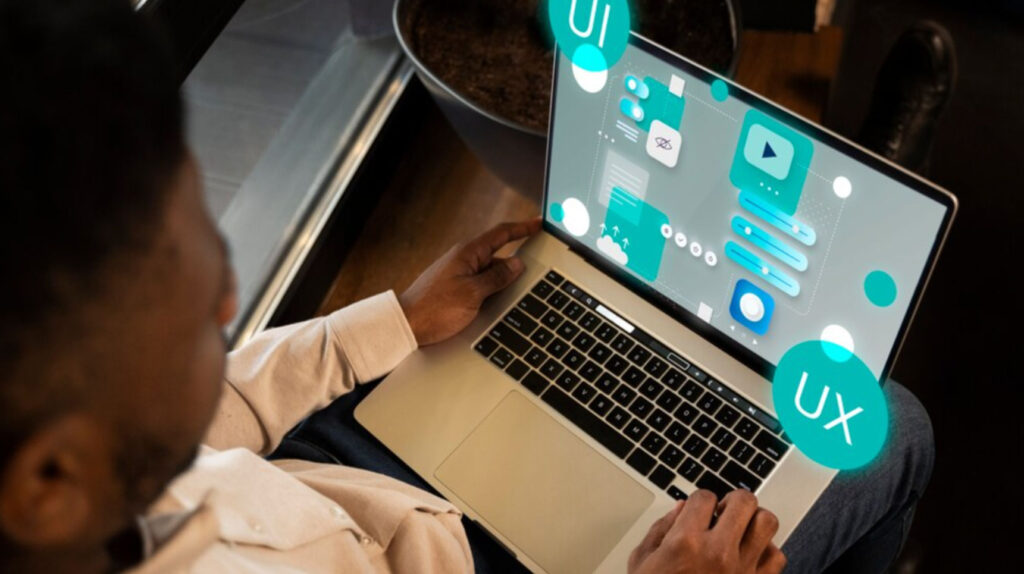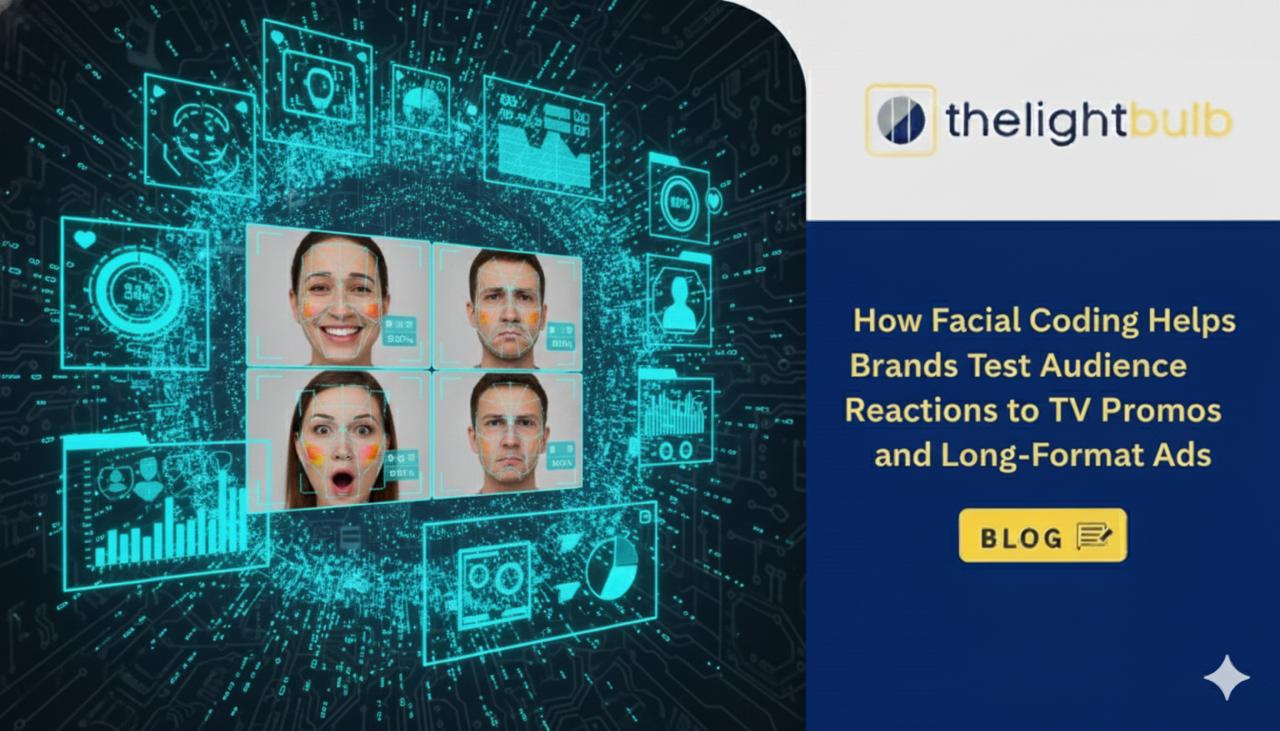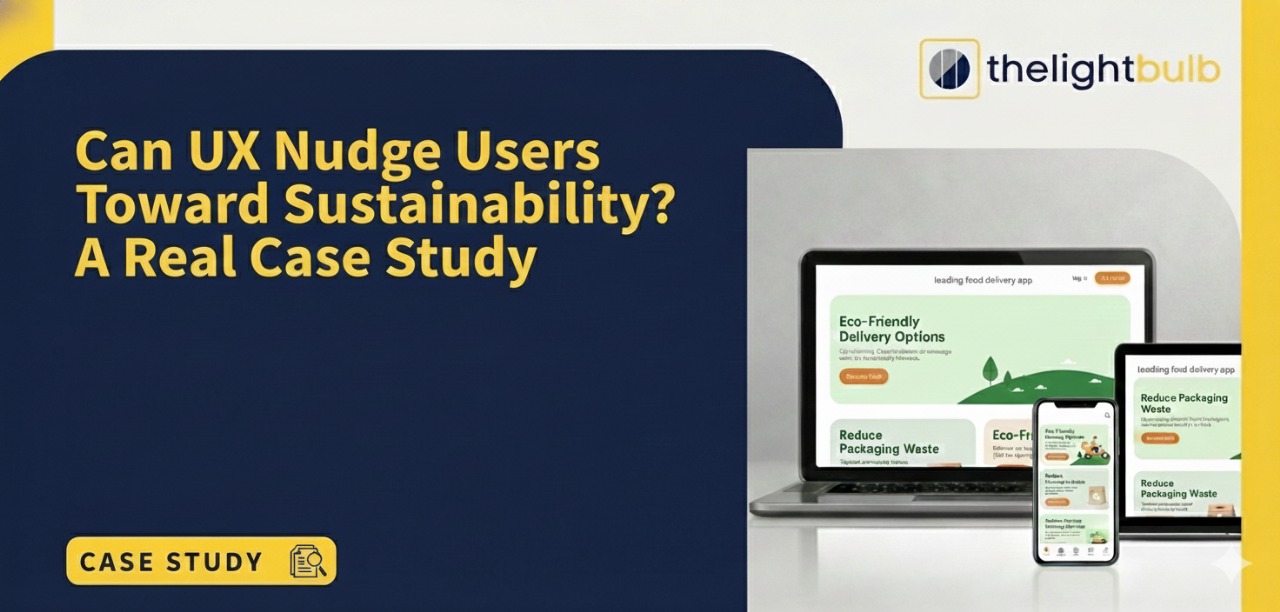
The UI/UX design realm is constantly evolving and keeping up with all the latest developments is very critical if you want to create user-focussed designs. As we lay our foot in 2024, learning about the trends that will decide the course of user interface and user experience becomes pivotal.
Ranging from the blend of AI to interfaces using emotional intelligence, these upcoming trends will redefine users’ interaction with technology. In this article, we’ll reveal the prominent trends for 2024 and their impact on the UI/UX landscape.

Significance of UI/UX in 2024
UI/UX design as you might be aware is the art of developing user-centric and visually appealing web products and pages. In this amalgamation, the UI professionals keep an eye on the aesthetic and the UX experts look after prioritizing the user’s journey and interaction with the product.
The upcoming demand for UI/UX (User Interface/User Experience) professionals is pretty much known and multiple factors contribute to the escalating necessity for UI/UX experts in the forthcoming years:
Mobile and App Evolution
The rising number of mobile app developers forms an underlying demand for UI/X designers that will shape and carve responsive, user-intuitive, and visually captivating mobile interfaces. With mobile applications dominating the digital content, the quest for small-screen UI/UX designs is set to soar.
Technological Progression
Technically UI and UX will be progressing in 2024 and it will be introduced with technical advancements like augmented reality (AR), virtual reality (VR), artificial intelligence (AI), and voice user interfaces. These technologies will form an integral part of shaping digital experiences.
Continuous Adaptation
In the dynamic landscape of UI/UX, companies will seek designers and professionals who embrace new technical design paradigms. Constant learning and skill enhancement are critical facets for UI/UX professionals, ensuring their competitiveness amid constant evolution.
Top 10 UI UX Design Trends in 2024 You Can’t Afford to Miss
With the evolving landscape of UI/UX demands in 2024, let’s delve into the trends set to define the year:
1. Adaptive UI
2024 will be about creating digital experiences that will function across a diverse array of devices, including everything from smartphones to desktops. The emphasis will be on ensuring visual allure and operational efficiency across platforms. Overall, designers will have to cater to varying screen sizes and resolutions, offering intuitive navigation.
2. Immersive Reality: AR & VR
AR and VR are technologies that have immersive potential and will transform user experiences. AR provides an enriched reality by overlaying digital content and VR duplicates the real environment digitally.
AR and VR will have broader applications in gaming, education, and e-commerce, bringing reality to users’ digital experience. Consequently, these technologies will elevate engagement and product differentiation.
3. Micro-Engagements
Microinteractions refer to subtle yet impactful user interactions that amplify UX design. They are evident in tapping animation or feedback cues, amplifying user engagement. Well-designed micro-interactions foster a more intuitive and enjoyable user journey.
4. Voice-driven interfaces (VUI)
VUI design is an innovation that enables users to make product controls through voice commands, gaining momentum with the introduction of smart speaker usage such as Alexa. It clearly shows that prioritizing natural language processing will become paramount in 2024 for seamless voice interactions.
5. 3D Aesthetics & Minimalism
The rise of 3D design and minimalism in 2024 infuses visual appeal with user-friendliness. Augmentation 3D and minimalism are quite impactful because 3D interfaces captivate user attention and minimalism streamlines UI elements.

6. AI Fusion
In 2024, AI’s role in UI/UX design will be inevitable. Leveraging AI-driven insights from user data will help you in curating personalized content and predictive interfaces, as a result, fostering user-centric and data-informed design choices.
7. Dark Mode Sophistication
This might come to you as a surprise, dark mode’s popularity will be ever more in 2024. The reason is dark mode’s mode capabilities for reducing eye staring and improving battery efficiency. However, the designers need to balance legibility to maintain optimal darkness levels across the UI.
8. Sustainable Design
2024 is all about sustainable designers where designers will focus on creating energy-efficient digital products. Strategies such as dark mode implementation is one of them.
9. Personalization Emphasis
2024 reinforces the significance of personalized experiences. The key is to use data and AI to craft interfaces, content, and recommendations, amplifying user engagement.
10. Personalization Emphasis
2024 reinforces the significance of personalized experiences. Utilizing data and AI, designers craft bespoke interfaces, content, and recommendations, heightening user engagement and satisfaction.
Influential Factors Shaping UI/UX Trends in 2024
When embarking on a design endeavor, be it for a web platform or mobile app, understanding the driving forces behind UX/UI trends becomes paramount. These factors wield substantial influence, delineating the trajectory and prevalence of these design paradigms.
Influential Factors Shaping UI/UX Trends in 2024
Before commencing a design endeavor, whether it is for a web platform or mobile app, understanding the driving forces behind UX/UI trends is critical. These factors have a substantial influence on the prevalence of design paradigms.
1. User Expectations: Bedrock of Design Initiatives
The key to meeting UI/UX user expectations is planning out a design blueprint that has a grasp of the factors sculpting UI/UX trends. This will determine the prevalence and dominance of the UI/UX trends.
2. Color Palette
The basics of UI design lay in choosing the perfect combination of colors. A color scheme can elevate the visibility and allure of your product design. Go for a sophisticated palette that is elegant yer aesthetic, encompassing the delicate equilibrium between shadows, negative space, contrasts, tones, and exposure breeds.
3. Content the Striks Visual Harmony
Content includes textual data and visual elements. Make sure to build a balance that captivates users’s attraction and embraces the trends. Lastly, make sure the elements harmonize with the user’s visual engagement.
4. Loading Speed
The importance of a lightweight design will still prevail in 2024. Swift loading times have a direct impact on the overall user experience, dodging user dissatisfaction by keeping them away from extended waits.
5. Screen Adaptability
With the different screen sizes available adaptability becomes paramount. Irrespective of the trends, ensuring UX adaptability for large and small screens will help you preserve user-friendliness.
6. Accessibility
A good design embraces inclusivity and in 2024 accessibility will be quite important. A user-centric design approach takes into consideration vision-impaired users necessitating dark themes or those with motor and hearing impairments requiring tailored features into account. In short, trendy products must cater to all user expectations, emphasizing accessibility through specialized UX development, and enhancing user engagement and satisfaction.

Embracing the Future of UI/UX Design in 2024
The UI/UX realm is going through a road of evolution and will continue to chart an adventurous path in 2024. As we explore the vast array of digital experiences, acknowledging the transformation that will shape user interfaces and experience becomes important.
The combination of technology and human-focused design clearly shows that adaptive UIs, immersive realities, and micro-interactions will redefine user engagement. The seamless blend of 3-dimensional aesthetics, AI integration, and accessibility prioritization will rule the future of UI/UX design in 2024.
From color palettes that captivate to loading speeds that defy impatience, the driving forces behind UX/UI trends converge to craft user-centric experiences. The mandate for the future remains clear – to craft immersive, inclusive, and intuitive digital spaces that transcend boundaries and resonate with users on a profound level.












